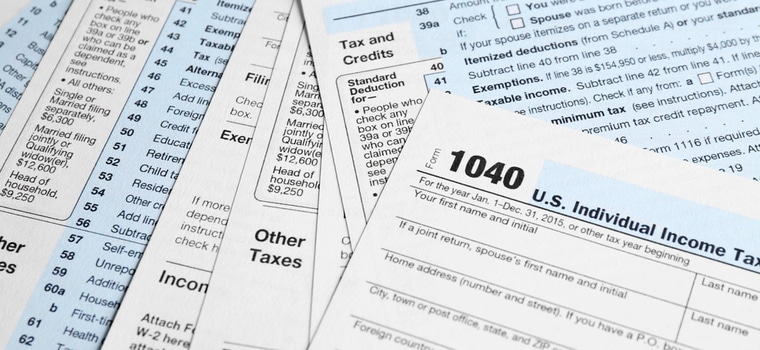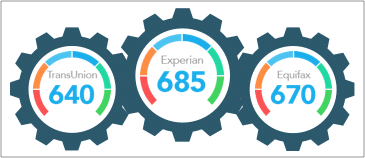Form 1099 is a tax document that helps you report wages or salary that you earned from other individuals or entities other than your employer.
For example, there are several entities that might issue a 1099 for you, including:
- Your bank, if you earned interest from your savings account.
- Your investment broker, if stocks you own paid a dividend.
- A business or individual, if you performed freelancers work and were paid for it.
Perhaps the most important thing to remember about how a 1099 form works is that the business, individual, or organization that files the form (that is, who paid you a dividend, salary, or interest) is not responsible for withdrawing taxes for you. Unlike a W-2 form, you are responsible for withholding your own taxes on the money received.
1099 Tax Forms Explained
Tax forms usually look complicated and Form 1099 is no exception. However, the 1099 is very simple. It includes all the basic information you need to report your income, including:
- Your name, address, Social Security number or tax identification number.
- The name, address and tax identification number for the issuing entity, company or person.
- Total income paid to you during the tax year. This will be listed in the specified box for the type of income you were paid.
- The amount of income that was withheld for federal or state income taxes if applicable.
What Are the Different Types of 1099 Tax Forms?
There are over 20 types of 1099 forms, each designed to report different types of income. Here is the complete list of 1099 forms and their associated names.
1099-A: Acquisition or Abandonment of Secured Property
1099-B: Proceeds from Broker and Barter Exchange Transactions
1099-C: Cancellation of Debt
1099-CAP: Changes in Corporate Control and Capital Structure
1099-DIV: Dividends and Distributions
1099-G: Government Payments
1099-H: Health Insurance Advance Payments
1099-INT: Interest Income
1099-K: Merchant Card and Third-Party Network Payments
1099-LTC: Long-Term Care Benefits
1099-MISC: Miscellaneous Income
1099-NEC: Non-Employee Compensation
1099-OID: Original Issue Discount
1099-PATR: Taxable Distributions Received from Cooperatives
1099-Q: Payment from Qualified Education Programs
1099-R: Distributions from Pensions, Annuities, Retirement Plans, IRAs or Insurance Contracts
1099-S: Proceeds from Real Estate Transactions
1099-SA: Distributions From an HSA, Archer MSA or Medicare Advantage MSA
RRB-1099: Payments by the Railroad Retirement Board
RRB-1099-R: Pension and Annuity Income by the Railroad Retirement Board
SSA-1099: Social Security Benefit Statement
Thankfully, there are only a handful of forms that most taxpayers need to concern themselves with, including the following:
1099-A: Acquisition or Abandonment of Secured Property
The IRS views canceled debt as income and this income is usually taxable. That means you could receive a 1099-A form if your mortgage lender canceled a portion or all of your mortgage debt. You might also receive this form if you sold your home as a short sale.
1099-B
Mutual fund companies and brokers send this form to you and the IRS when you sell stocks. The form details the date of the sale, how much money you received and general cost basis information.
1099-INT
The purpose of the 1099-INT form is to report interest income. Anytime a person, bank or another entity pays you $10 or more in a calendar year, they must give you a 1099-INT form. Note, the IRS taxes interest income as ordinary income, meaning you’ll be taxed at the same rate on your earned interest as you will on your employer’s paycheck.
1099-DIV
Dividends from stock, mutual funds, and other securities that are worth at least $10 are reported using Form 1099-DIV.
1099-MISC
1099-MISC is a catchall category for many of the various types of income you could receive. In particular, if a client pays you over $600 for a professional service during the year, they are required to file a 1099-MISC and issue a copy to you.
1099-R
The 1099-R form is used to report distributions you receive from your retirement accounts, including IRAs, pensions, 401(k)s and annuities. If you take $10 or more from your retirement plan, you’ll likely receive a 1099-R form. You could also receive the form for non-taxable distributions, such as a rollover from a previous employer’s 401(k) plan into an IRA account.
1099-S
The 1099-S form is used to report the proceeds from real estate transactions. For example, if you sell your home you should expect to receive a 1099-S form from the entity responsible for closing the sale.
Individual tax filers may exclude up to $250,000 in gains while those who file jointly may exclude up to $500,000 in gains, so long as certain criteria are met. Read the form carefully to understand what real estate income you must report.
1099-SA
You may receive a 1099-SA form if you received distributions from your health savings account, Medicare Advantage or Archer medical savings account. Note that you may not have to pay taxes on HSA or Archer distributions if they are used to pay for qualified health expenses. In such cases, the 1099-SA is merely a record showing the money was distributed to you.
How Do I Report 1099 Income?
Assuming the information on your 1099 form is accurate, you can file your income taxes as you normally do while using these guidelines:
- Report interest and dividend income using 1040 form Schedule B.
- Claim capital gains and losses with Schedule D.
- Account for freelance and independent contracting work by filling out and attaching Schedule C.
- Retirement distributions do not require an additional schedule form. Report the distributions on line 4a and 4b of your 1040 (according to 2019 Form 1040)
Most 1099 forms must be sent to you by January 31, giving you ample time to report your income on your tax returns by the deadline. Give the forms to your accountant to help them file your taxes. If you use tax preparation software such as TurboTax or H&R Block, the program will prompt you to enter information from your 1099 forms as you complete your tax returns.
What If I Don’t Receive a 1099 Tax Form?
Whenever you receive a Form 1099, you must report that income to the IRS. But what if you don’t receive a 1099 form you were expecting? Not all companies issue 1099 forms or sometimes they get lost in the mail. Either way, not having a 1099 form is only a problem if you don’t keep your income records and you don’t know how much income to report.
That’s because unlike W-2 forms, the IRS doesn’t require you to include your 1099 forms when you file your taxes. If you know the accurate amount you must report, there isn’t a problem with not having the form.
Of course, there’s no harm in contacting the 1099 issuer and confirming your numbers are the same as theirs. In fact, if they submit a 1099 form to the IRS that shows a higher amount than what you report, you could be on the hook to pay the difference to the IRS.
The Bottom Line
Earning extra income is always a good idea so long as you meet your tax obligations. While the 1099 forms help you report your income, they also help the IRS keep track of the taxes you must pay.
Disclaimer: The Content is for informational purposes only, you should not construe any such information or other material as legal, tax, investment, financial, or other advice.




